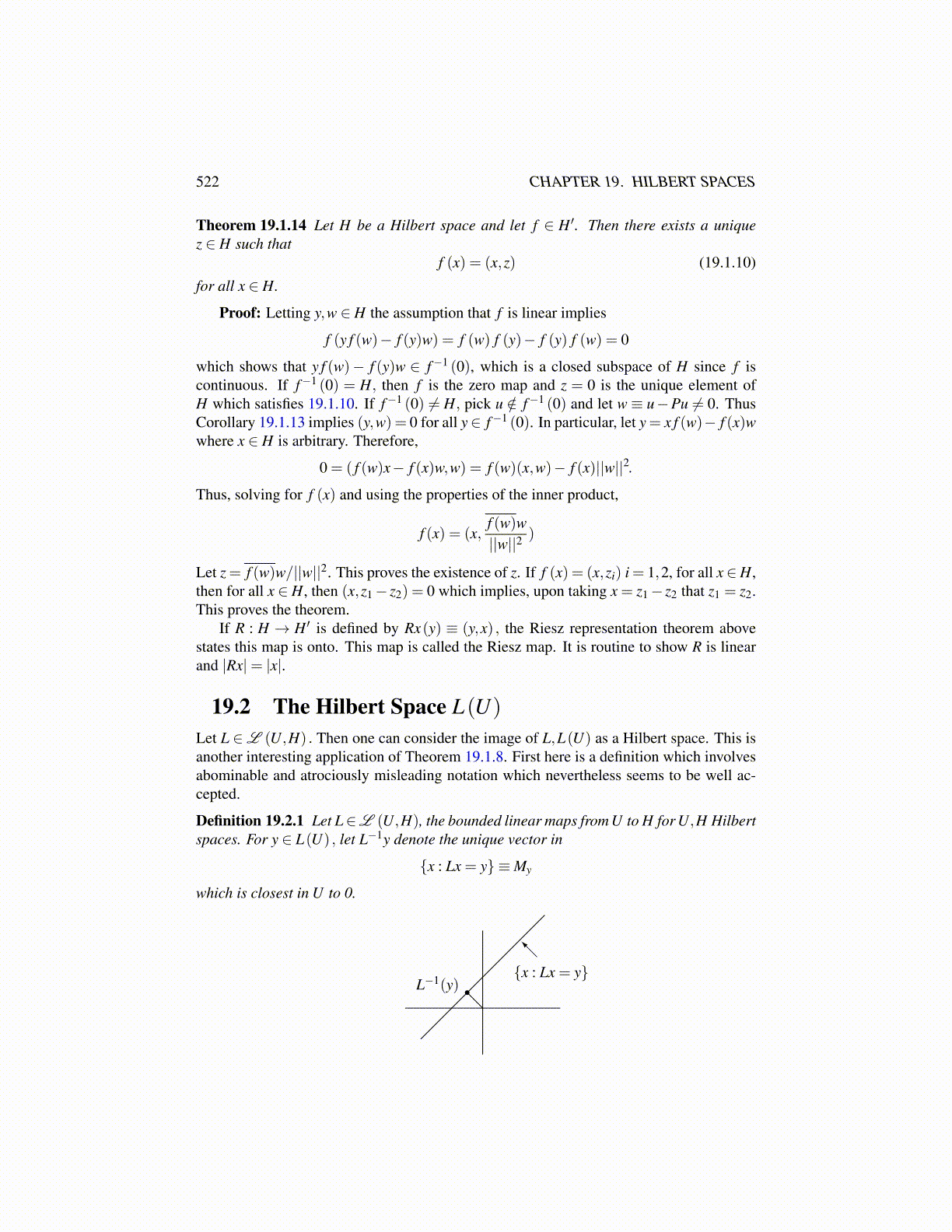
522 CHAPTER 19. HILBERT SPACES
Theorem 19.1.14 Let H be a Hilbert space and let f ∈ H ′. Then there exists a uniquez ∈ H such that
f (x) = (x,z) (19.1.10)
for all x ∈ H.
Proof: Letting y,w ∈ H the assumption that f is linear implies
f (y f (w)− f (y)w) = f (w) f (y)− f (y) f (w) = 0
which shows that y f (w)− f (y)w ∈ f−1 (0), which is a closed subspace of H since f iscontinuous. If f−1 (0) = H, then f is the zero map and z = 0 is the unique element ofH which satisfies 19.1.10. If f−1 (0) ̸= H, pick u /∈ f−1 (0) and let w ≡ u−Pu ̸= 0. ThusCorollary 19.1.13 implies (y,w) = 0 for all y∈ f−1 (0). In particular, let y = x f (w)− f (x)wwhere x ∈ H is arbitrary. Therefore,
0 = ( f (w)x− f (x)w,w) = f (w)(x,w)− f (x)||w||2.
Thus, solving for f (x) and using the properties of the inner product,
f (x) = (x,f (w)w||w||2
)
Let z = f (w)w/||w||2. This proves the existence of z. If f (x) = (x,zi) i = 1,2, for all x∈H,then for all x ∈H, then (x,z1− z2) = 0 which implies, upon taking x = z1− z2 that z1 = z2.This proves the theorem.
If R : H → H ′ is defined by Rx(y) ≡ (y,x) , the Riesz representation theorem abovestates this map is onto. This map is called the Riesz map. It is routine to show R is linearand |Rx|= |x|.
19.2 The Hilbert Space L(U)
Let L ∈L (U,H) . Then one can consider the image of L,L(U) as a Hilbert space. This isanother interesting application of Theorem 19.1.8. First here is a definition which involvesabominable and atrociously misleading notation which nevertheless seems to be well ac-cepted.
Definition 19.2.1 Let L∈L (U,H), the bounded linear maps from U to H for U,H Hilbertspaces. For y ∈ L(U) , let L−1y denote the unique vector in
{x : Lx = y} ≡My
which is closest in U to 0.
{x : Lx = y}L−1(y)